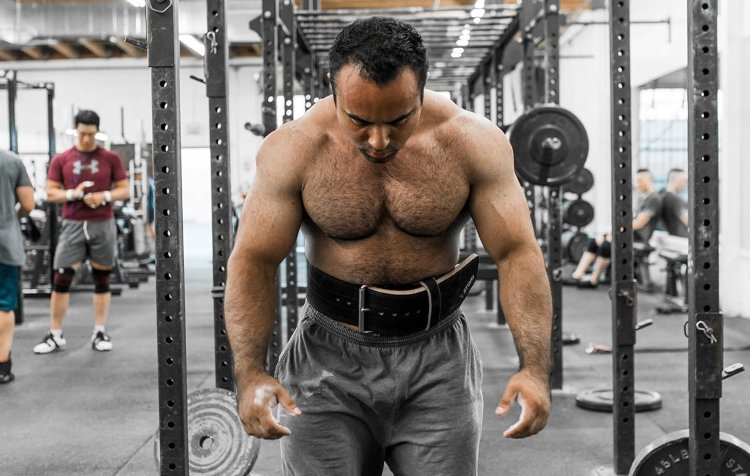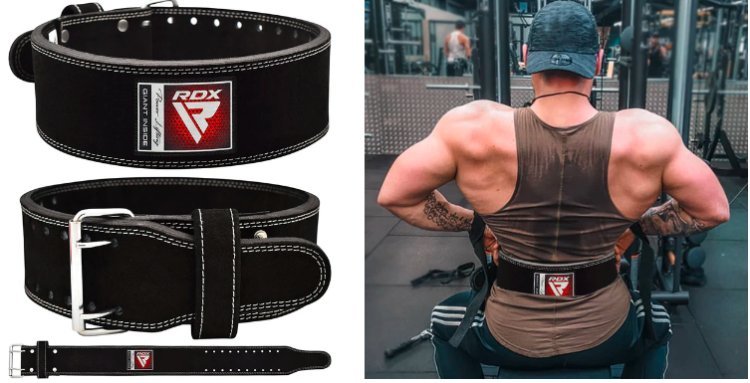Powerlifting Belts: Everything You Need to Know
Powerlifting belts are a staple in the strength training community, offering both support and confidence to lifters pushing their limits.

Introduction
Powerlifting belts are a staple in the strength training community, offering both support and confidence to lifters pushing their limits. Whether you're a seasoned powerlifter or just getting started, understanding the role of a powerlifting belt can help you maximize your performance and stay safe. This article delves into everything you need to know about powerlifting belts, from their benefits to how to choose the right one for your needs.
What is a Powerlifting Belt?
A powerlifting belt is a thick, sturdy belt worn around the waist during heavy lifts. It’s designed to increase intra-abdominal pressure, providing extra support to the lower back and core. Typically made from leather or synthetic materials, these belts are built to withstand the rigors of intense lifting sessions.
History of Powerlifting Belts
Powerlifting belts have been used for decades, evolving from simple leather straps to the highly engineered products available today. Originally, belts were used by weightlifters and strongmen to enhance performance and prevent injury. Over time, their design has improved, incorporating better materials and more ergonomic features.
Benefits of Using a Powerlifting Belt
Increased Intra-Abdominal Pressure
One of the primary benefits of using a powerlifting belt is the increase in intra-abdominal pressure. This pressure acts like a natural brace for your spine, reducing the risk of injury and allowing you to lift heavier weights more safely.
Enhanced Stability and Support
By stabilizing your core, a powerlifting belt helps you maintain proper form during lifts. This stability is crucial when performing exercises like squats and deadlifts, where maintaining alignment can prevent strain and injury.
Improved Performance
Many lifters find that wearing a belt enables them to lift heavier weights. The additional support and confidence provided by the belt can lead to improved performance and progress in strength training.
How Powerlifting Belts Work
Mechanism of Action
Powerlifting belts work by increasing the pressure within your abdominal cavity. When you brace your core against the belt, this internal pressure supports your spine, much like inflating a balloon inside a box.
Scientific Explanation
The science behind powerlifting belts involves the Valsalva maneuver, a technique where you take a deep breath and hold it while bracing your core. The belt enhances this maneuver, leading to greater spinal stability and reduced risk of injury.
Types of Powerlifting Belts
Single Prong Belts
Single prong belts are simple and easy to adjust. They have one buckle prong, making them less complicated to put on and take off.
Double Prong Belts
Double prong belts offer a bit more security than single prong belts, as they distribute the load more evenly across the buckle. However, they can be trickier to adjust.
Lever Belts
Lever belts feature a lever mechanism that allows for quick adjustments and a consistent fit. These belts are popular among serious lifters due to their ease of use and secure fit.
Velcro Belts
Velcro belts are less common in powerlifting but offer quick and easy adjustments. They are often used for lighter lifting or in training scenarios where maximum support isn't necessary.

How to Choose the Right Powerlifting Belt
Consider Your Lifting Goals
Your choice of belt should reflect your lifting goals. For example, if you're focusing on heavy powerlifting, a thicker, more rigid belt might be best. For more general strength training, a less stiff belt could suffice.
Material Considerations
Leather belts are durable and provide excellent support but can be stiff and require a break-in period. Synthetic belts are often more flexible and comfortable but may not last as long.
Fit and Comfort
Comfort is key when choosing a belt. Make sure the belt fits snugly around your waist without pinching or causing discomfort. The right fit will ensure you get the most support without sacrificing comfort.
Sizing and Fit
Measuring Your Waist
To find the correct size, measure around your waist where the belt will sit, typically just above the hips. Compare this measurement to the sizing chart provided by the belt manufacturer.
Adjusting the Belt
Once you have the correct size, you'll need to adjust the belt for a snug fit. The belt should be tight enough to support your core but not so tight that it restricts breathing or movement.
When to Use a Powerlifting Belt
Ideal Exercises for Belt Use
Powerlifting belts are most beneficial during heavy compound lifts such as squats, deadlifts, and overhead presses. These exercises place a significant load on the spine, and the belt helps provide the necessary support.
Timing During a Workout
Use your belt during the heaviest sets of your workout, where maximum support is needed. For lighter sets and warm-ups, it’s generally best to go without the belt to allow your core muscles to engage naturally.
Proper Technique for Wearing a Powerlifting Belt
Correct Positioning
Position the belt around your waist, just above your hip bones. The buckle should be centered, and the belt should be tight enough to feel snug but not restrictive.
Common Mistakes to Avoid
Avoid wearing the belt too high or too low, as this can reduce its effectiveness. Also, don't rely solely on the belt for support; proper lifting technique is crucial.
Common Myths About Powerlifting Belts
Belts Make Your Core Weak
Some believe that using a belt will weaken your core muscles. However, when used correctly, belts can actually help strengthen your core by allowing you to lift heavier weights safely.
Belts Are Only for Professionals
Belts are not just for elite lifters. Anyone lifting heavy weights can benefit from the added support and stability that a belt provides.
Maintaining Your Powerlifting Belt
Cleaning and Care
To keep your belt in good condition, wipe it down with a damp cloth after each use and let it air dry. Avoid using harsh chemicals that can damage the material.
Storage Tips
Store your belt in a cool, dry place away from direct sunlight. This will help preserve the material and extend the life of the belt.
Conclusion
Powerlifting belts are an essential tool for anyone serious about lifting heavy weights. They provide crucial support, enhance stability, and can help improve your overall performance. By understanding how to choose, use, and maintain a powerlifting belt, you can make the most of this valuable piece of equipment and lift safely and effectively.
What's Your Reaction?










![Blog Submission Sites 2024 [High DA]](https://blognow.co.in/uploads/images/202306/image_100x75_6494a03eaff5e.jpg)
![Article Submission Sites 2023 [High DA & PA]](https://blognow.co.in/uploads/images/202307/image_100x75_64c4181f17036.jpg)
![Classified Submission Sites 2023 [High DA & PR]](https://blognow.co.in/uploads/images/202306/image_100x75_649dcd5260808.jpg)




![Article Submission Sites 2023 [High DA & PA]](https://blognow.co.in/uploads/images/202307/image_750x415_64c4181f08ed5.jpg)
![Classified Submission Sites 2023 [High DA & PR]](https://blognow.co.in/uploads/images/202306/image_750x415_649dcd5247eeb.jpg)
![Blog Submission Sites 2024 [High DA]](https://blognow.co.in/uploads/images/202306/image_750x415_6494a03e96bfa.jpg)
